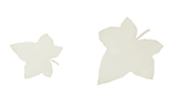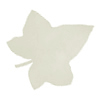|
Comfrey
- Symphytum officinale
Commonly
found growing in damp places, the common comfrey
is a stout, stiffly haired plant with a ridged stem,
hairy leaves and flowers of white, pink or purple.
The
folkname of 'knitbone' gives evidence to Comfrey's
long traditional use in mending bones. Culpeper
stated that "it is said to be so powerful to
consolidate and nit together, that if it be boiled
with dissevered pieces of flesh in a pot, it will
join them together again." Indeed, its botanical
name seems to support this long held belief - symphytum
being derived from the Greek "to unite"
- whilst the name comfrey itself could be considered
a corruption of 'con firma' suggesting that the
bone would indeed be 'made firm'.
Comfrey
is rich in minerals, and provides mucilage to digestive
tracts and mucous membrane, supports the nervous
system and soothes the urinary tract. It promotes
growth or regeneration of skin tissue throughout
the body, including that of the connective tissue
vital to firm, youthful skin. K'eogh wrote his Irish
Herbal [1735 ] that it "heals all inward wounds
and ruptures." As well as having an anti-inflammatory
action Comfrey contains allantoin, a cell proliferant
that helps repair damaged tissue. An infused oil
of Comfrey is highly effective in treating sprains
and reducing bruising. The leaves, flowers and stems
can also be boiled down to a pulp and applied hot,
wrapped in a cloth, to a sprain or small fracture.
Comfrey's
anti-inflammatory, astringent actions can be used
to effectively calm inflamed skin rashes, psoriasis
and acne - an infusion can be strained and swabbed
over the affected area, or apply Comfrey ointment
- not only will it soothe and heal the skin, but
also prevent scarring. It is also good for rough
and damaged skin. A soothing bath can be prepared
using a tablespoon of comfrey to 3 cups of milk,
which should be slowly heated up and simmered before
being strained into the bath water.
The healing actions of comfrey are so rapid that
it should only ever be used on clean wounds, to
prevent dirt or pus being trapped and possibly causing
abcesses.
A
potassium rich water for feeding tomatoes or marrow
crops can be made by soaking the comfrey plant in
water for a week.
Carried
during travels Comfrey is believed to ensure a safe
journey [unless customs find it in your luggage
and assume it's a different herb!]
!
Do not take during pregnancy or whilst breast-feeding.
Do not use on dirty wounds ! |











